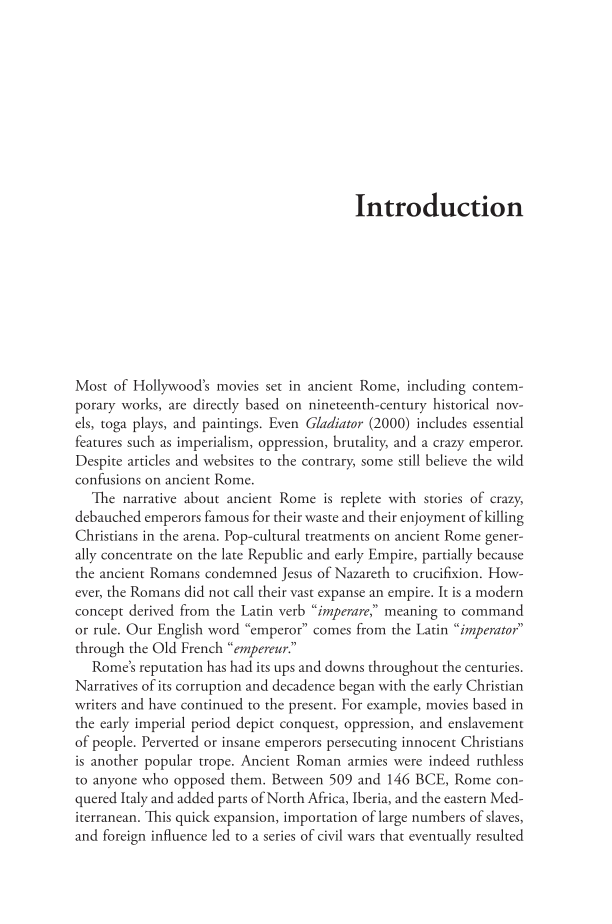Introduction Most of Hollywood’s movies set in ancient Rome, including contem- porary works, are directly based on nineteenth-century historical nov- els, toga plays, and paintings. Even Gladiator (2000) includes essential features such as imperialism, oppression, brutality, and a crazy emperor. Despite articles and websites to the contrary, some still believe the wild confusions on ancient Rome. The narrative about ancient Rome is replete with stories of crazy, debauched emperors famous for their waste and their enjoyment of killing Christians in the arena. Pop-cultural treatments on ancient Rome gener- ally concentrate on the late Republic and early Empire, partially because the ancient Romans condemned Jesus of Nazareth to crucifixion. How- ever, the Romans did not call their vast expanse an empire. It is a modern concept derived from the Latin verb “imperare,” meaning to command or rule. Our English word “emperor” comes from the Latin “imperator” through the Old French “empereur.” Rome’s reputation has had its ups and downs throughout the centuries. Narratives of its corruption and decadence began with the early Christian writers and have continued to the present. For example, movies based in the early imperial period depict conquest, oppression, and enslavement of people. Perverted or insane emperors persecuting innocent Christians is another popular trope. Ancient Roman armies were indeed ruthless to anyone who opposed them. Between 509 and 146 BCE, Rome con- quered Italy and added parts of North Africa, Iberia, and the eastern Med- iterranean. This quick expansion, importation of large numbers of slaves, and foreign influence led to a series of civil wars that eventually resulted
Document Details My Account Print multiple pages
Print
You have printed 0 times in the last 24 hours.
Your print count will reset on at .
You may print 0 more time(s) before then.
You may print a maximum of 0 pages at a time.
































































































































































































































































